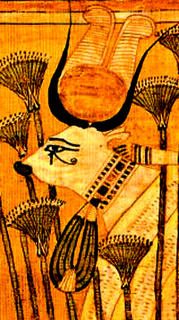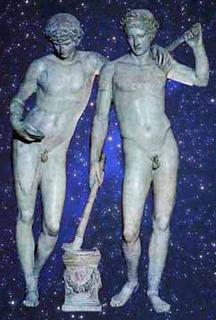Ante Diem VII Kalendas November

Modern Date : October 26th
Ante Diem VII Kalendas November
Seventh Day to the Kalends of November
This is one of the dies comitiales when committees of citizens could vote on political or criminal matters.
Today in ancient Rome was the first day of the Ludi Victoriae Sullanae. These games were held in honour of Victoria commemorating Sulla's defeat of the Samnites in 82 B.C.
31 CE, suicide of Apicata, wife of the disgraced Praetorian Praefect Sejanus
October was the eighth month of the old Roman calendar and was sacred to the goddess Astraea, daughter of Zeus and Themis. The name October comes from Octo, meaning eight (March used to be the first month).
Hathor's Moon festival
In Egypt, this was the day of the goddess Hathor's Moon festival. Hathor was the Egyptian cow goddess and also the goddess of death. She was the patron of bodily love and the Egyptian counterpart to Venus. Hathor was appealed to by the Egyptians for assistance during childbirth. As a cow goddess she was envisioned as suckling infants. The Dance of Hathor involved groups of girls holding mirrors in one hand and rattles in the other.
Simchat Torah
The day following Sh'mini Atzeret in the Jewish ritual calendar is the day when the annual reading of the Torah ends and begins again. The people dance with the Torah rolls and circle the Ark in which they are kept seven times. In some congregations, different groups take the seven virtues of God (Chesed or Loving-Kindness, Gevurah or Severity, Tiferet or Beauty, Netzach or Victory, Hod or Glory, Yesod or Intimacy and Malchut or Majesty) as their theme and create banners, music, stories and dances that symbolize these qualities. Because of the emphasis on dance, in modern times, some congregations learn a new dance on this day.
St Demeter/St Demetrius
In Albania, this is the day on which houses are prepared for winter. Blankets and sheepskins are brought out and the house made snug. Like other autumn saints, St. Luke and St. Michael, St. Demetrius often brings a spell of good weather called "the summer of St. Demetrius."
In Greece, this is the day for opening and tasting the new wines. In Txando, Thrace, on the eve of St. Demetrius' Day, two men don a camel costume and make rounds of the village accompanied by other friends in costume. They wish each household a happy new year and receive gifts of wheat and wine in return.

